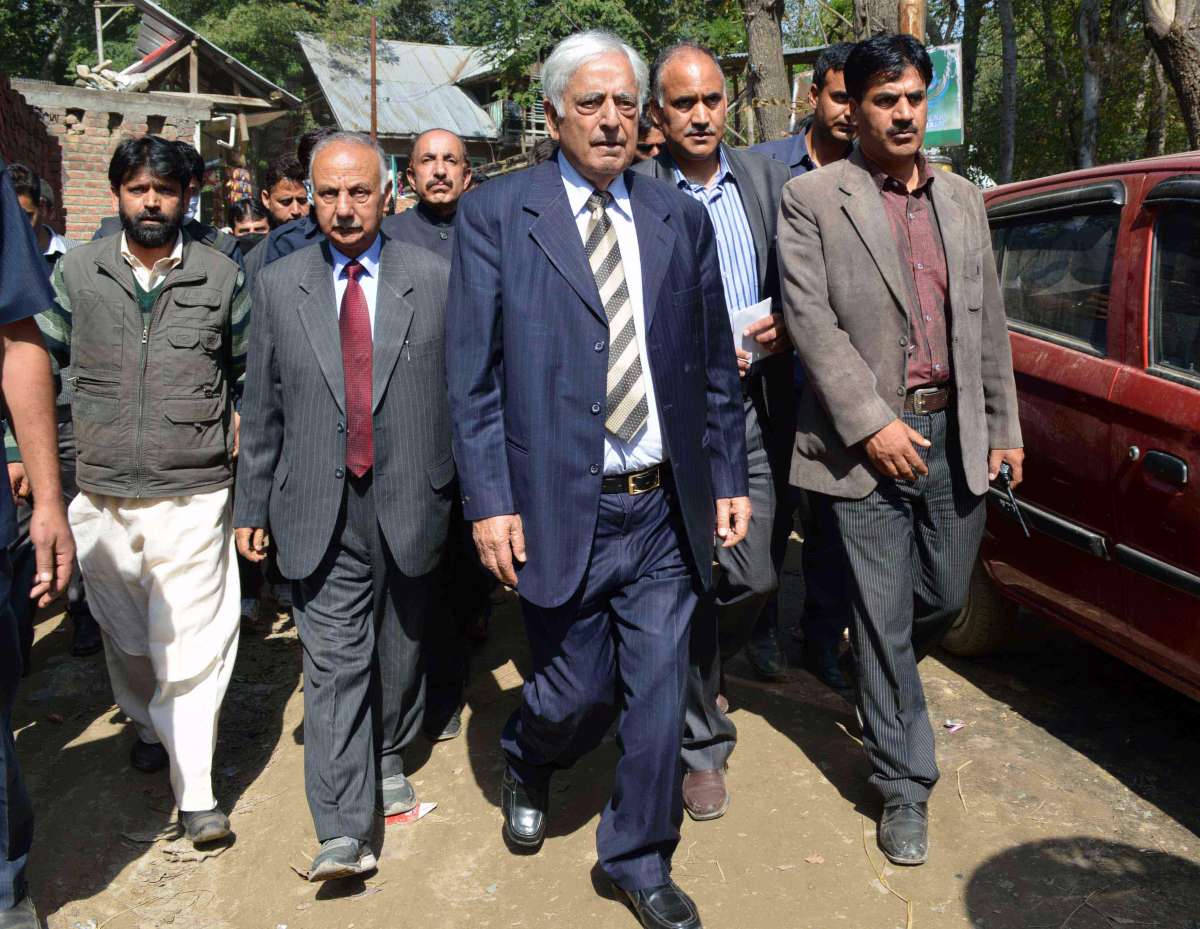Kashmir challenge: Modi could write history or blot it…writes Saeed Naqvi

A principal reason for Narendra Modi being swept to power in May was disgust with Sonia Gandhi, Rahul Gandhi and Manmohan Singh – indecisive, short on ideas, bereft of charisma and supervising a government of scams. In a house of 543, the Congress had 209 seats. The shortfall of 63 was made up of coalition partners.
Manmohan Singh was a fine finance minister but, as prime minister, had a problem of being deferential to the Gandhis to the point of being obsequious. He looked more ineffective than he was. This collective anti-incumbency was harvested by Modi.
Big business along with their multinational linkages mounted a media campaign larger than any in electoral history; by some estimates even bigger than the Obama campaign. This campaign too found the adage apt: with opponents like the Congress, who needs friends? For the first time in decades, a single party government came to power. Without any alteration that same defunct Congress is being sought to be resurrected.
The Bharatiya Janata Party (BJP) is committed to Hindu nationalism. This does strike a chord with a majority of Hindus. But the storm troopers who helped bring BJP to power were from ultra Hindutva groups like the RSS and the VHP. These extremist groups read the mandate which brought Modi to power according to their exclusive lights. They went on a rampage demanding “ghar wapsi” or reconversion of Muslims and Christians to Hinduism. Hindu women must produce five children to boost population; they must resist an inexplicable quantity called “Love Jehad”. They went to absurd lengths crediting ancient India with every conceivable scientific invention. Elephant God Ganesha was a result of plastic surgery. They provoked communal riots; barged into parties admonishing youngsters against dancing and drinking beer. Modi waited and watched from an ambiguous distance.
By their excesses, they ended up embarrassing the majority of Hindus along with other Indians. This when that very helpful tailwind, the anti incumbency against Sonia, Rahul and Manmohan Singh had disappeared. The international talent Corporate India had mobilized for one full year buying up every square inch of media space to build up Modi as the development messiah, was no longer available. And, above all, prices of food had risen sky high.
Came a series of by elections in UP, Bihar, Jharkhand. The Modi magic appeared not to be working. Then came the elections to the Delhi State Assembly. On a platform against corruption and for social justice the Aam Admi Party trounced the BJP. Of the 70 seats, AAP won 67, making Arvind Kejriwal the David to Modi’s Goliath.
After this experience last month, there was general nervousness among big industry and their multinational partners: what kind of budget will Modi and his bright Finance Minister Arun Jaitley produce?
They have produced a market friendly budget focused on massive infrastructure projects, putting out allurements to invite Foreign Direct Investment. After the electoral debacle in Delhi, the fear was that the government would fall back on populism, increasing public spending to enhance the social security net. But Modi surprised everybody. The Corporates were overjoyed.

In fact, Modi has placed himself at the mercy of Corporates: it is in your interest, he seems to be telling India Inc, as well as that of the country, to keep the BJP government buoyant with cent percent media support on the scale that was available to the party eversince Modi’s candidature was announced in June 2013, right upto the elections in May 2014. Will the Corporates now attend to his requirements, in the forthcoming elections in Bihar, Assam, UP. He has gambled for growth not electoral populism. If the economy shows promise he will look safe by the next general elections in 2019.
The riveting development the one that will define Modi’s innings, has been the power sharing government in Kashmir. This has opened up the possibility of improved relations with Pakistan which in turn will bring down the communal temperature, an enabling precondition for accelerated economic growth.
The chief minister of Jammu and Kashmir is the most astute leader of the Peoples Democratic Party, Mufti Mohammad Sayeed. He has vast experience of Delhi too where he has served as the union home minister. He is familiar with all the caverns of intrigue on the Delhi, Srinagar, Islamabad axis.
Recently, one of the most respected columnists in India, Swaminathan Aiyar lifted the scab from an old wound: the genocide of over 200,000 Muslims in Jammu before the accession of the state by Maharaja Hari Singh into the Indian Union. The later migration of 400,000 Kashmiri Pandits from the valley to Jammu, according to Aiyar, is a living tragedy though not quite as gruesome as the Jammu massacres.
That the BJP and the PDP have joined hands in Kashmir against the backdrop is laden with possibilities. Summer is round the corner. A bumper season to boost tourism in the most magnificent parts of the state right upto the Gurez valley is possible in conditions of peace. It will open up hearts and minds.
Ghalib wrote:
“Hasad se dil agar afsurda hai,
Garme tamasha ho
Ki chashm e tung shayad kasrat e
Nazzara se waa ho.”
(If meanness and malice oppress the heart, step out and travel,
Narrowness of vision may open up with the abundance of the spectacle.)